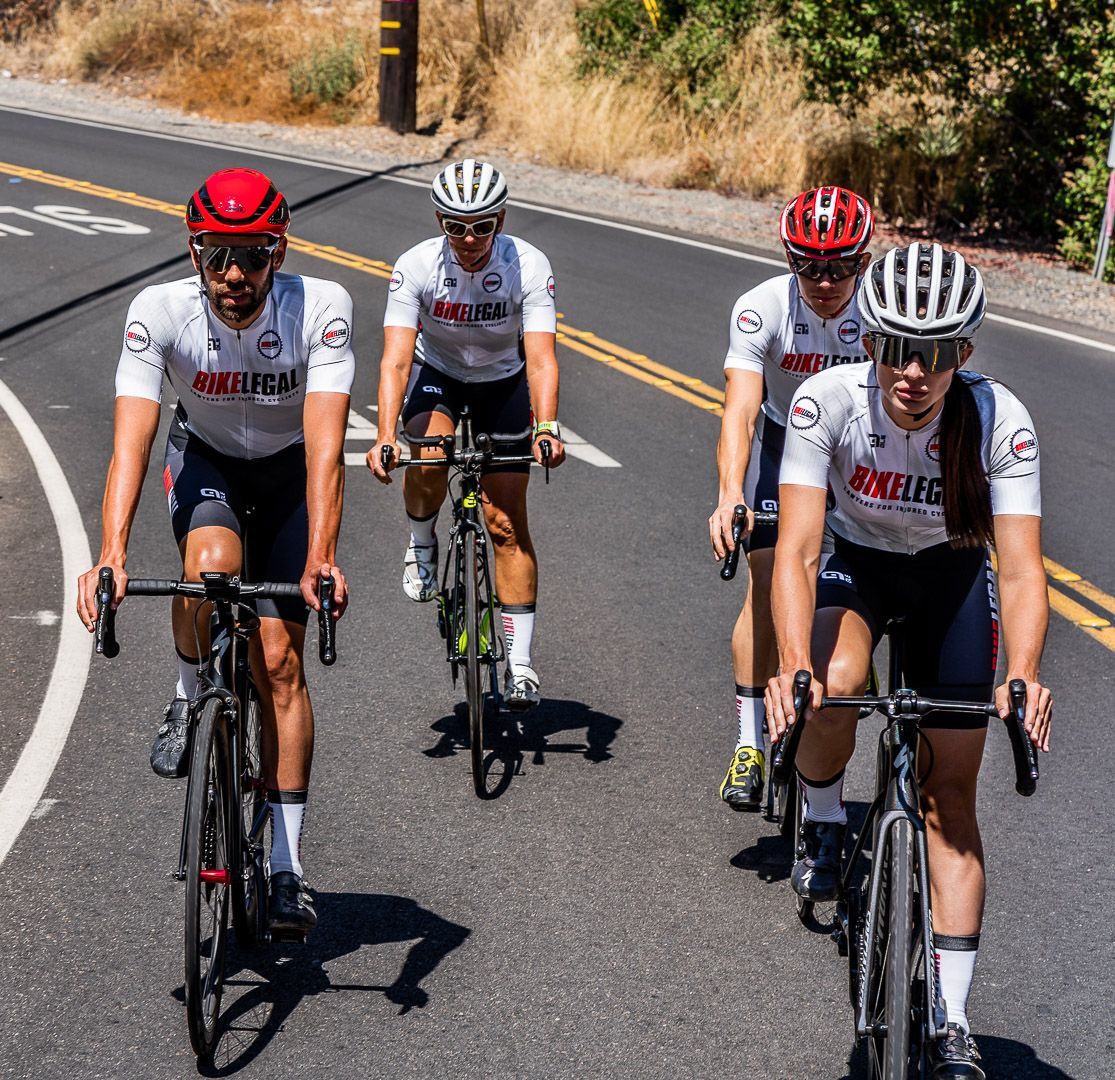Bicycle Hand Signals for Turning A Guide for Safe Cycling
Follow us on
social media!
Bicycle Hand Signals for Turning A Guide for Safe Cycling
When you ride a bicycle, it is essential to know how to use cycling hand signals to ensure your safety. Using hand signals is the most effective way to communicate your intentions and other cyclists. By signaling where you are going and what you plan to do, you can help prevent accidents. The use of bicycle hand signals can make the environment safer for everyone.
What Are Bicycle Hand Signals?
Bicycle hand signals are a set of gestures cyclists use to indicate their intended direction on the road. Cyclists use hand motions to show their next move to motorists, pedestrians, and other cyclists. Most traffic laws worldwide recognize and standardize bicycle hand signals.
Why Are Bike Hand Signals Important
The National Highway Traffic Safety Administration (NHTSA) describes that around 966 bicyclists died in crashes with motor vehicles in the United States in 2021.
The use of bicycle hand signals reduces the risk of any accident. For example, when cyclists straighten their left arm, they signal that they are turning left. Similarly, signaling a right turn involves fully extending the right arm. Giving a slow down or stop signal requires lowering the left arm with the palm facing backward.
In addition, using hand signals also shows respect for other road users and promotes good cycling etiquette. It allows motorists to anticipate the cyclist's movements and adjust their behavior accordingly, reducing the risk of a collision.
The Primary Bicycle Hand Signals You Need to Know
There are three primary bike hand signals that every cyclist should know:
- Left turn
- Right turn
- Stopping.
Make sure to look back quickly to make eye contact with other drivers. It will help to improve your awareness of what is happening on the road. It makes it possible for them to see your signals.
Give a 100-foot warning before turning or stopping. It helps other motorists and bikers to react and allows you to turn or stop. In this situation, you should have both your hands on the handlebars. Before you turn or stop, hold the signal for about three seconds.
Left Turn Signal
Extend your left arm to the side to signal a left turn. Your hand must be open, with your palm facing forward. Make this signal around 100 feet before turning to let others know you're about to turn. Give yourself time to get your hands back on your bike.
Right Turn Signal
There are two ways to indicate a right turn. The first method is to extend your right arm straight to the side with your hand and palm open. The second method is to raise your left arm with your bent elbow at a 90-degree angle. In this method, your arm will form an L-shape. Then, point your hand and index finger to the right.
Stopping
Extend your left arm to the side to signal that you're stopping. In this position, keep your hand open and your palm facing downward.
Other Cycling Hand Signals
Along with the primary bicycle hand signals, cyclists can use other hand signals to communicate with other riders.
Left Arm Straight Out
This signal means you're going straight through an intersection or a roundabout. Expand your left arm to the side, with your hand open and your palm facing downward.
Right Arm
If you cannot use the right turn signal, use the left turn signal with your right arm instead. Extend your right arm straight out to the side, with your hand open and your palm facing forward.
Left Arm and Hand Pointing Down
Road users utilize this signal to alert others of hazards on the road, such as potholes, debris, or gravel. Stretch your left arm to the side, with your open hand and facing palm backward. Then raise your pointer and index finger to the ground.
Left Arm and Hand Pointing Up
This signal indicates you will turn sharply to the left, such as a hairpin bend. Wide your left arm to the side, with your hand open and your palm facing upward. To execute, raise your pointer and index finger to the sky.
When to Use Bicycle Hand Signals?
It's crucial to use a bicycle hand signal whenever you're turning or stopping, regardless of whether there's other traffic around. The use of hand signals lets other road users know what you're about to do. It gives them enough time to react and adjust their driving or cycling accordingly.
How to Execute Bicycle Hand Signals Properly?
To execute the bicycle hand signal correctly, follow these steps:
- Check behind you for any traffic.
- Signal your intention to turn or stop using the appropriate hand signal.
- Maintain your balance and control of your bicycle while signaling.
- Hold your eyes on the road ahead and be aware of any traffic or road conditions changes.
Cycling Hand Signals and Traffic Laws
Most countries, including the United States, Canada, and the United Kingdom, legally require cyclists to use hand signals. Negligence to do so can result in a fine or penalty.
It's essential to familiarize yourself with the cycling hand signals specific to your area. It's also necessary to follow all traffic laws related to cycling. That will help keep you safe. It will also demonstrate to road users that cyclists can be responsible and respectful of traffic laws.
Left Arm or Right Arm Bicycle Signal? Which Is Proper?
One common question about cycling hand signals is whether using the right arm rather than the left-arm movement is appropriate. While some cyclists may feel more comfortable using the right-arm indicator. It's important to note that most traffic laws worldwide recognize the left-arm signal as standard.
Using the left-arm signal also makes it easier for other road users to see your call. It helps, especially when riding in a group or in heavy traffic. In addition, using the left-arm signal helps prevent confusion and ensures everyone on the road is on the same page.
Using Bicycle Hand Signals in Different Situations
As a cyclist, it is essential to know how to use hand signals to communicate effectively on the road. The basic hand signals for turning and stopping are suitable for most situations, but there may be times when you need to use additional signals to clarify your intentions.
For example, when approaching a roundabout and planning to turn left, use both the left turn signal and extend your left arm to indicate you're going directly through the roundabout.
You can use hand signals while cycling to prevent left turns by other road users at T-intersections. To do this, check over your left shoulder for approaching vehicles, extend your left arm straight to the side, and make eye contact with drivers waiting to turn left. If necessary, use a slowing down or stopping hand signal and position yourself in the center of the lane to increase visibility and discourage left turns in front of you.
In addition, when cycling at night, you can use a combination of rear reflectors and hand signals (specifically, the left arm extended straight out) to indicate to other road users not to turn left in front of you at a T intersection.
By using these additional signals, you can prevent confusion and ensure that everyone on the road understands your intentions. Always check behind and be aware of your surroundings when using your hand signals.
What to Do if You Happen to Be in a Bicycle Accident?
Cycling can be a fun and healthy means of transportation, but safety must remain the top priority. Proper hand signaling plays a crucial role in safe cycling. However, if you have been a victim of bicycle accident injuries, our team of bicycle accident attorneys at Bike Legal is here to guide you. Contact us now for a free consultation at 877-245-3534, and let us guide you on how to move forward with your bicycle accident case.
FAQS
Is Using Hand Signals Important When Cycling, Even on Quiet Roads?
Yes, it's crucial to use proper hand signals when cycling, even on quiet roads. Hand signals indicate your intentions to other road users, including pedestrians and motorists. It helps prevent accidents and keeps everyone safe. It's best to assume that other road users may not anticipate your movements. Using hand signals is a simple yet effective way to communicate and ensure a safe cycling experience.
What Are the Benefits of Bicycle Turning Signals?
Bicycle turning signals provide several advantages for cyclists on the road.
- Firstly, they enhance the cyclist's visibility to other road users, reducing the risk of collisions.
- Secondly, they communicate the cyclist's intentions to drivers, pedestrians, and other cyclists.
- Thirdly, they promote safer and more predictable cycling behavior, contributing to a safer cycling environment.

